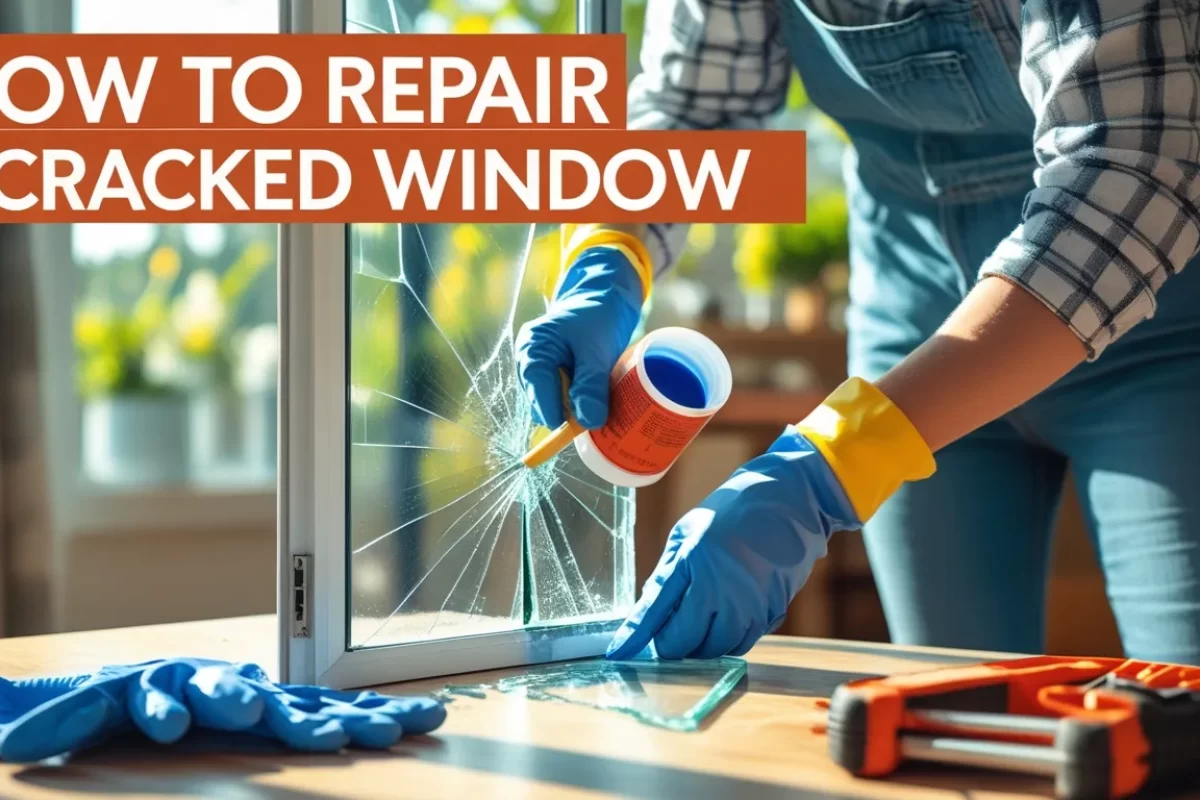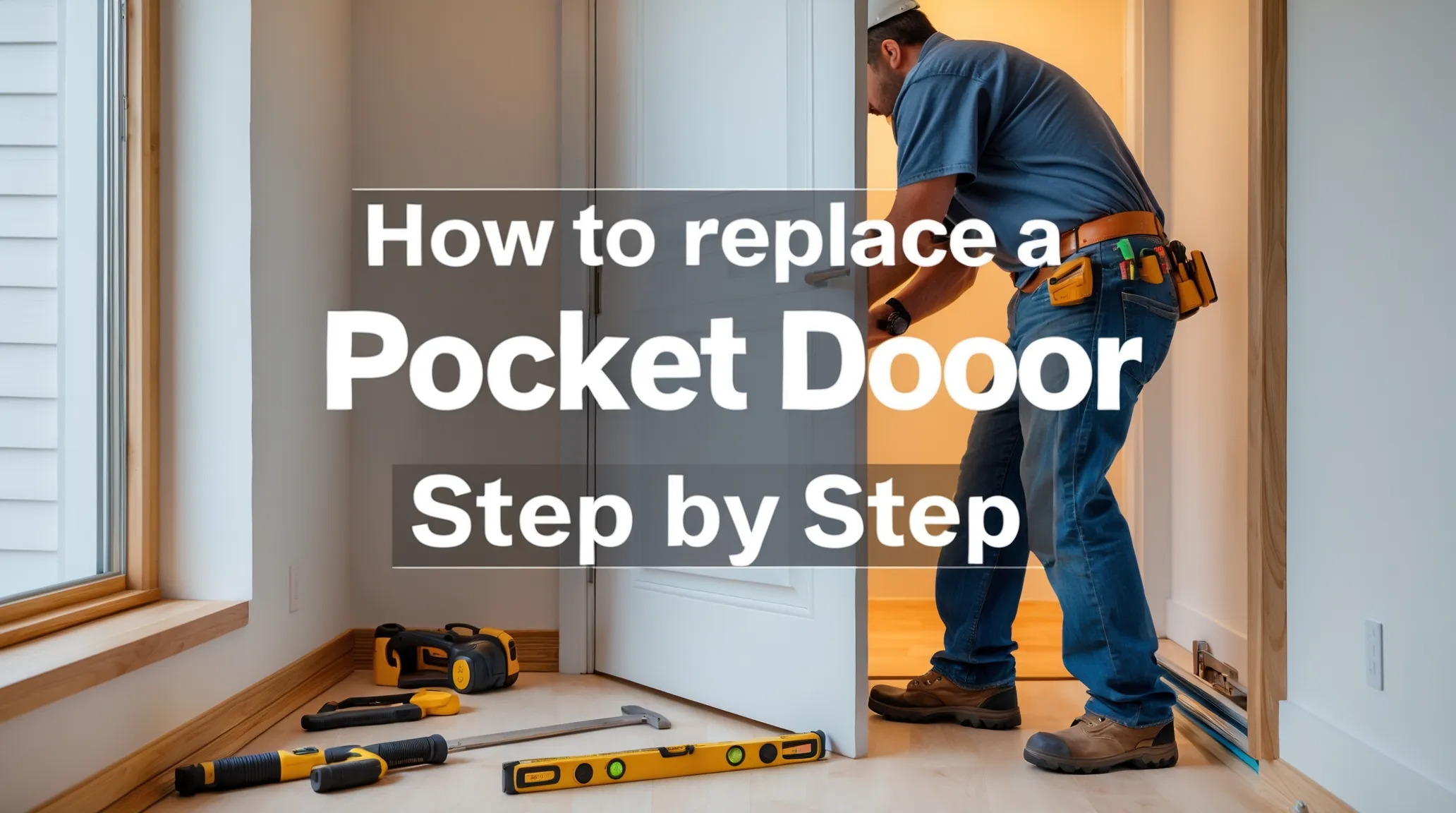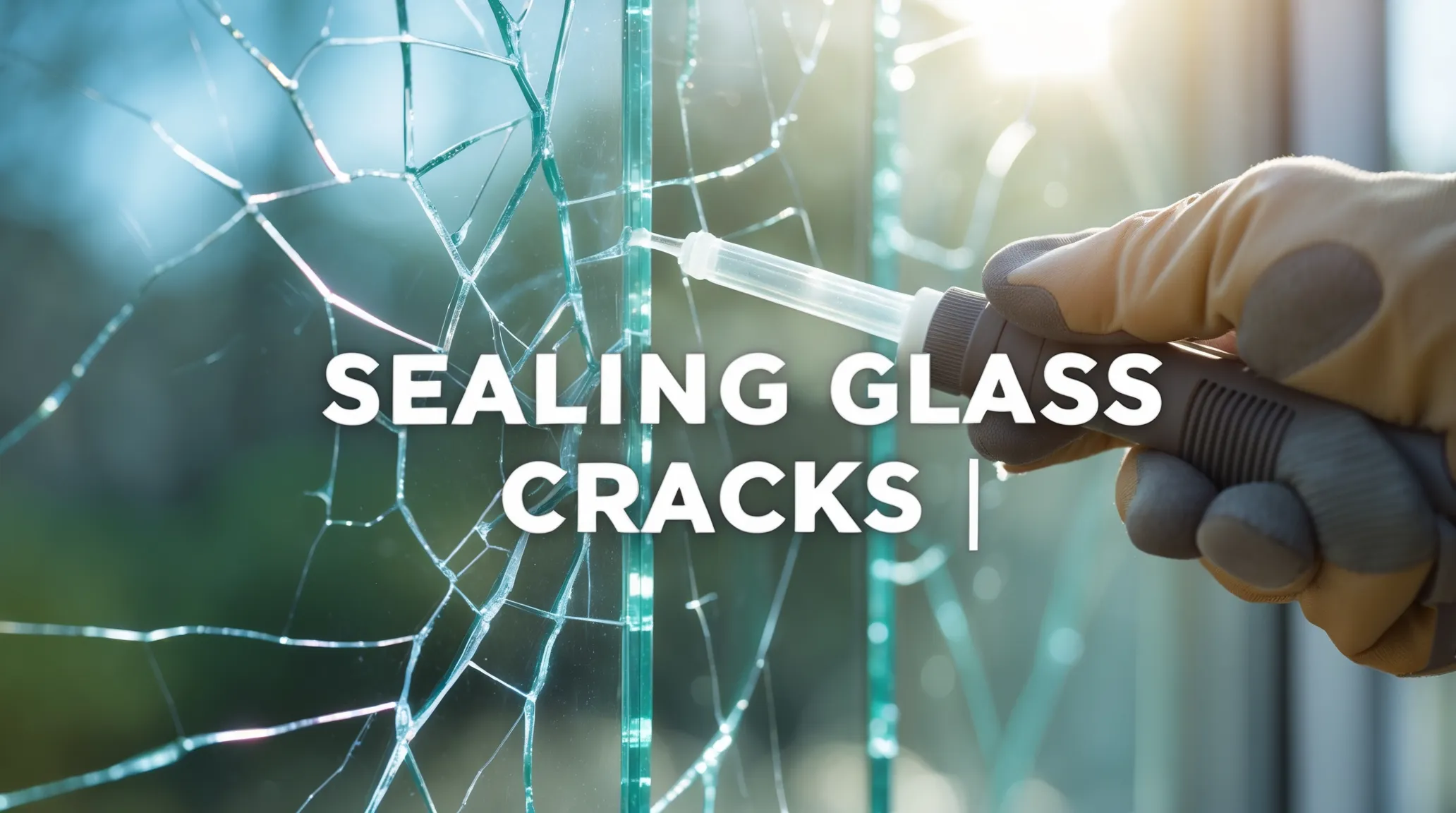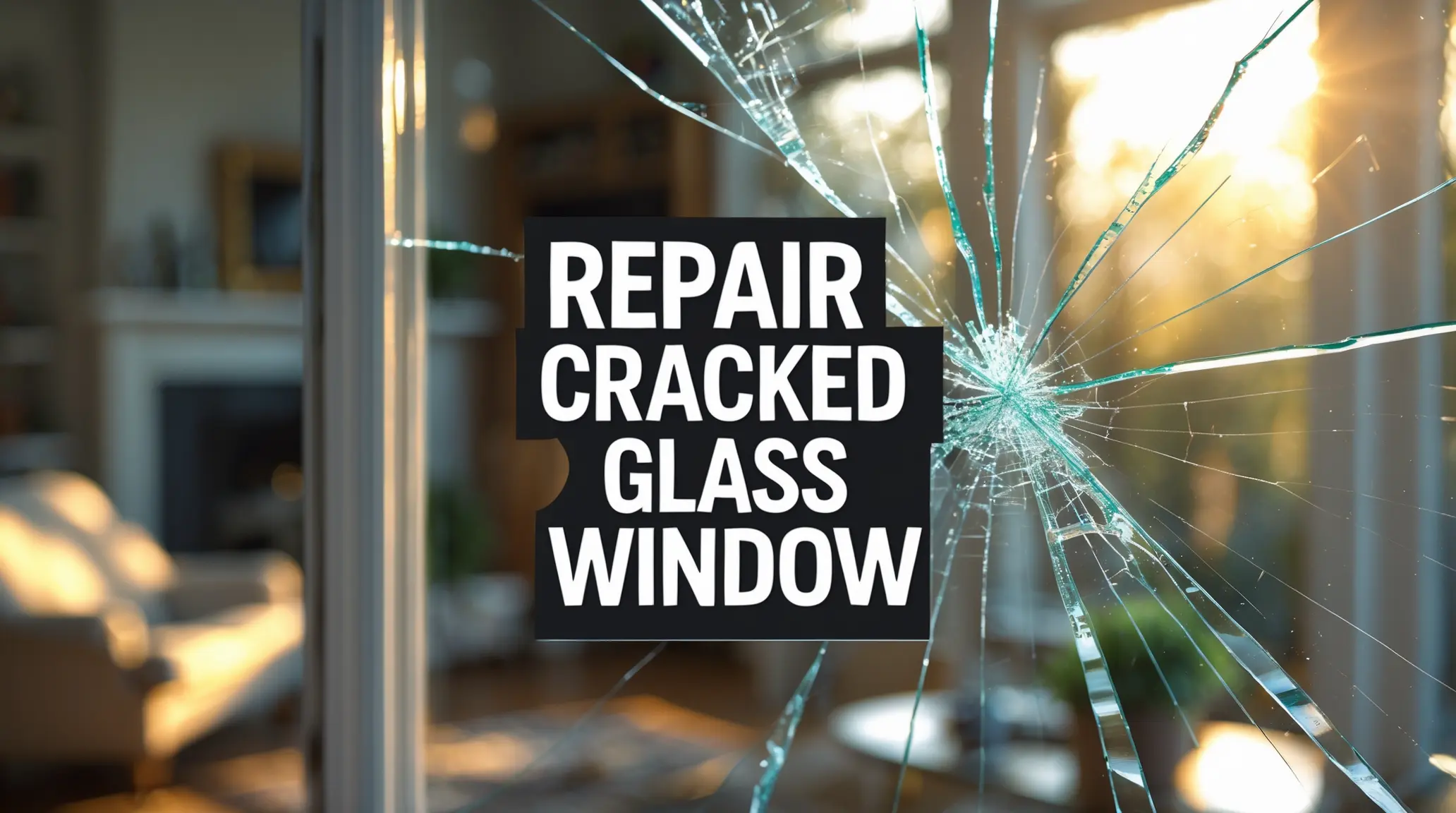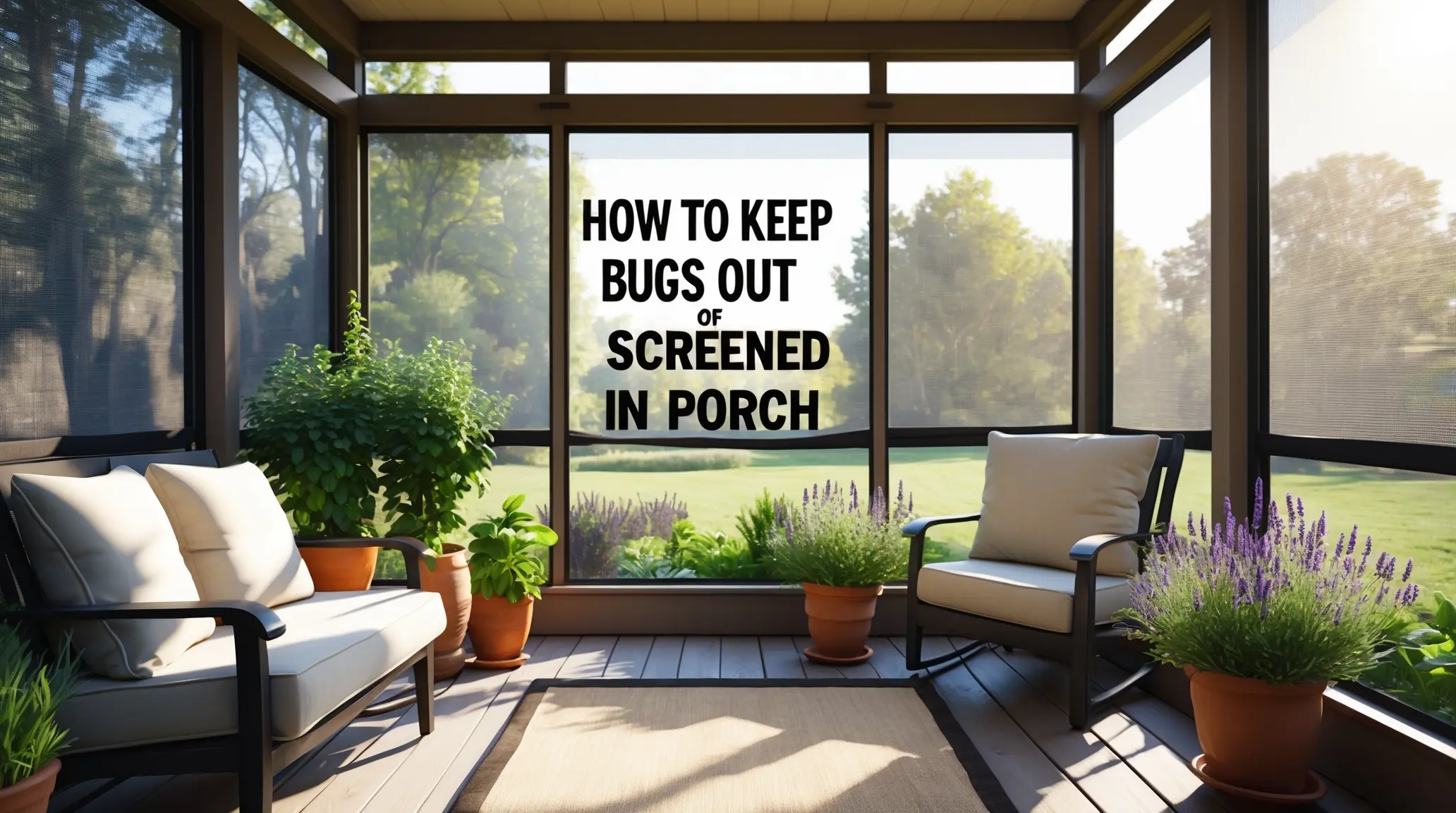Why Cracks in Windows Should Never Be Ignored
Windows are an essential part of every home. They protect us from wind, rain, dust, and outside noise. But when a window develops even a small crack, that layer of protection becomes weak. Many people ignore little cracks, thinking they’re not a big deal. However, over time, these cracks can get worse. One day, it might be a small line in the glass, and the next day, it can become a wide split or even cause the entire window to break.
Cracks also affect the temperature inside your house. If there’s a gap in the glass, warm or cool air can leak out. That means your heating or air conditioning has to work harder, which increases your energy bills. Bugs and moisture can also sneak in through cracked windows, causing other problems like mold or pests.
Most importantly, a cracked window is a safety concern. The glass could shatter at any time, especially if hit or exposed to big temperature changes. For families with young kids or pets, this is especially risky. Learning how to repair a cracked window is not just about saving money—it’s about keeping your home safe and strong.
How to Repair a Cracked Window: What to Know Before You Begin

Before jumping into the repair process, it’s smart to take a moment and look at the crack closely. What kind of crack is it? Is it a straight line? Is it spreading fast? Is the crack deep or shallow? Knowing these details will help you decide what to do next. For example, a shallow surface crack might be easy to repair, while a deeper one might need a full window replacement.
The size and location of the crack matter too. If the crack is small, away from the edges, and not in a double-pane or insulated window, you can often fix it yourself. But if it’s on the edge, it could spread more easily. Also, cracks in double-pane windows are more complicated because the seal between the panes can be broken. When that happens, moisture can get in, causing foggy glass and even damage to your frame.
You’ll also need to prepare the space before you start repairing. Clean the area around the window. Remove any decorations or blinds that might get in your way. Make sure the room is well-lit so you can see what you’re doing. And most importantly, make sure the glass is not at risk of falling out or breaking more while you work on it.
Always wear gloves when handling broken or cracked glass. Even if the glass looks smooth, tiny splinters can still cause cuts. Safety glasses are a good idea, too. If you’re not comfortable working with glass, it’s okay to call for help. Repair Champions is always ready to step in when you need it.
Can You Repair a Crack in Glass or Is Replacement Better?
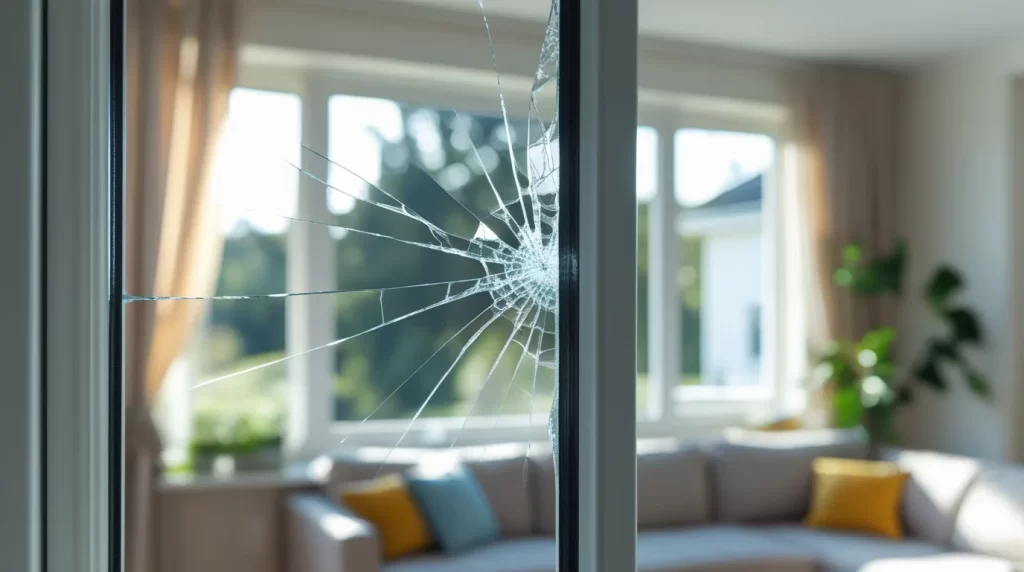
This is one of the most common questions homeowners ask: Can you repair a crack in glass, or do you need to replace the whole thing? The answer depends on a few things, like the type, size, and location of the crack.
If the crack is short (less than 12 inches), isn’t spreading, and isn’t near the edges, you can usually fix it. Clear epoxy or special glass adhesives work well in these cases. These products seal the crack, prevent it from growing, and make the glass look almost new again. In some cases, the crack might still be faintly visible, but the strength of the window will be restored.
But sometimes, repairs aren’t enough. For example:
- If the crack is longer than a foot or keeps growing, it’s best to replace the glass.
- If the crack is on a double-pane window, you may not be able to seal it properly. These windows have insulation inside, and once that’s broken, the window loses energy efficiency.
- If the crack is on a tempered glass window (like in some doors or shower windows), it’s usually better to replace it. Tempered glass breaks in a special way, and once it’s cracked, its strength is gone.
Here’s a simple rule of thumb: if you’re not sure, try the repair first. If the crack comes back, spreads, or makes the window look bad, then go for a full replacement. Calling a professional like Repair Champions ensures you get the right advice for your unique situation.
Types of Cracks You Might Find in a House Window
Not all window cracks are the same. Some are caused by outside forces, while others happen slowly over time. Knowing the type of crack in your window helps you choose the best way to fix it. Let’s go over the most common ones you may see in your home:
- Stress Cracks
These cracks often start near the edge of the window. They happen when there are big changes in temperature. For example, if one part of the window is in the sun while the other part is in shade, the glass can expand and contract unevenly. This causes a long crack that usually curves. - Impact Cracks
If something hits your window—like a baseball, a rock, or even a tree branch—you may get an impact crack. These often look like a starburst or spider web. The center is where the object hit, and cracks spread outward. In most cases, these are more serious and may need full glass replacement. - Pressure Cracks
You might find these in double-pane or insulated windows. Pressure cracks usually look like curved lines. They happen when there’s a problem with how the glass was installed or sealed. It can also occur due to changes in air pressure, especially in high altitudes. - Edge Cracks
These cracks begin at the edge of the window and spread inward. They are often caused by poor handling during installation or too much pressure on the frame. Cracked window panes with edge cracks usually spread faster than others.
Each of these cracks may look small at first, but over time, they can grow. That’s why it’s smart to fix cracked windows quickly—even if the damage seems minor.
Fix Cracked Window Without Replacing the Whole Pane
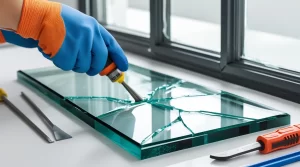
A full window replacement can be costly. The good news is that you don’t always need to replace the entire window if the crack is manageable. In fact, many small cracks can be repaired at home using the right products and a bit of patience.
One way to fix a cracked window pane is by using clear epoxy. This is a strong, glue-like material that fills the crack and hardens. It keeps the crack from spreading and also improves the look of the glass. Glass adhesives work in a similar way. They are usually found at home improvement stores and are made just for cracked windows.
Another option is using clear tape as a temporary solution. While it doesn’t fix the crack, it helps stop it from spreading until you can do a full repair. This is useful when you don’t have the tools yet or want to wait for a professional.
If you’re wondering how to repair a cracked window using these methods, the key is to work carefully. Clean the area, apply the adhesive, and let it dry fully. It may not make the crack disappear completely, but it will stop it from getting worse.
A common question we hear is: Can you repair a crack in glass instead of replacing the window? The answer is yes—especially if the crack is less than 12 inches long, not near the edge, and not in a double-pane unit. This type of fix is great for saving money and time.
How to Repair a Cracked Window at Home Step by Step
Fixing a cracked window at home is easier than you might think. You don’t need fancy tools or a lot of experience. Just follow these simple steps, and you’ll have a safer, better-looking window in no time.
Step 1: Clean the Glass Surface
Before you start, make sure the glass is clean. Use a soft cloth and a gentle glass cleaner to remove dust, dirt, and grease from the area. Let it dry completely before moving on.
Step 2: Put on Safety Gear
Even a small crack can lead to tiny glass shards. Wear gloves and safety glasses to protect your hands and eyes. Always be careful when working around glass.
Step 3: Apply Glass Adhesive or Epoxy
Choose a high-quality epoxy or glass adhesive from a hardware store. These products come in a tube, much like glue. Squeeze a small amount directly into the crack. Try to fill the entire crack, not just the surface.
Step 4: Smooth the Surface
Use a razor blade or plastic scraper to gently smooth out the adhesive while it’s still wet. Be careful not to press too hard. The goal is to make the glass look as clear as possible once it dries.
Step 5: Let It Dry Fully
Leave the window alone for several hours or overnight. Follow the drying time mentioned on the product label. The adhesive will harden and bond with the glass, stopping the crack from growing.
Step 6: Check the Repair
Once the area is dry, check your work. Lightly run your finger (with a glove on) across the surface. If it feels smooth and solid, you’ve done it right. If the crack is still spreading, you may need to apply more epoxy—or consider calling a professional.
These steps are safe for most home windows. However, if your window has a large or spreading crack, or is in a tough-to-reach area, don’t risk it. Call the experts at Repair Champions for help. They’ll make sure the repair is strong, clean, and lasting.
What You’ll Need to Fix a Cracked Window Pane
Before starting any window repair, it helps to gather all the tools and supplies you’ll need. Having everything ready saves time and keeps you from making mistakes halfway through the job. Here’s a list of common items used to fix a cracked window pane at home:
- Glass cleaner – A clean surface helps the adhesive stick better.
- Microfiber cloth or lint-free towel – For wiping down the window.
- Clear epoxy or glass adhesive – This fills in the crack and seals it.
- Gloves – Protect your hands from glass or chemicals.
- Safety glasses – To shield your eyes during the repair process.
- Razor blade or scraper – To smooth out the epoxy once applied.
- Painter’s tape (optional) – Can help guide where to apply the adhesive or protect surrounding areas.
- Small brush or cotton swab – Useful for cleaning or applying adhesive in hard-to-reach areas.
If you’re repairing a cracked window without replacing it, make sure the adhesive you choose is made for glass. Regular glue or sealant won’t bond well and can look messy. Also, check that your razor blade is new—dull blades can scratch the glass and make things worse.
Being prepared with these simple tools ensures a smoother and safer repair, especially if this is your first time fixing a cracked house window pane.
Mistakes to Avoid When Repairing a Cracked Window
While repairing a cracked window might seem easy, small mistakes can lead to poor results or even more damage. Below are common problems people run into and tips for how to avoid them:
- Skipping the cleaning step: If the glass is dirty or greasy, the adhesive won’t stick well. Always clean it first.
- Using the wrong product: Not all adhesives work on glass. Avoid all-purpose glues and use a product labeled for window or glass repair.
- Applying too much pressure: Pressing hard on the cracked glass can cause it to break more. Be gentle when applying epoxy.
- Not waiting for it to dry: If you touch or move the adhesive before it’s fully dry, the crack may reopen. Always follow the product’s instructions.
- Ignoring signs of spreading cracks: If your window crack keeps growing after repair, it’s a sign that the pane might need replacement.
Fixing a cracked window at home can save you time and money. But rushing or skipping steps can lead to a weaker repair. If you’re unsure or worried about safety, professionals like Repair Champions are here to help. They have experience handling all types of window cracks and will do the job right.
When Cracked House Window Repair Should Be Left to Experts
Even if you know how to repair a cracked window, not every situation is a DIY job. Sometimes the damage is too severe—or too risky to fix without help. Here are times when it’s best to let a professional step in:
- The crack is longer than 12 inches: Larger cracks are harder to seal and may spread even after a repair.
- The crack keeps growing: If you already tried to fix it and it still spreads, replacement may be the only option.
- The crack is on a double-pane window: These windows are sealed with gas between layers. Once cracked, they lose energy efficiency and are hard to fix at home.
- You can feel air or see condensation: That means the seal is broken and moisture is getting inside.
- The crack is near the window’s edge: Cracks at the edges tend to spread faster and make the whole pane weaker.
- You don’t feel confident doing the repair: Working with glass takes care. If you’re unsure, you’re better off calling someone experienced.
Calling Repair Champions means you get trusted experts with the right tools and knowledge. We know how to safely handle cracked house window repairs and can guide you through the best fix for your situation. You don’t have to figure it out alone.
How to Repair a Cracked Window with Help from Repair Champions in Irvine, CA
If you live in or near Irvine, CA, Repair Champions is your local go-to team for window repair. We understand how stressful a cracked window can be, especially when you want to keep your home safe, energy-efficient, and looking good. Whether you’re dealing with a small crack or a badly damaged pane, our team knows exactly how to repair a cracked window quickly and correctly.
We offer full inspections to check the damage and provide honest advice. If your window can be repaired, we’ll do it using strong, long-lasting materials. If it needs replacement, we’ll help you choose the right option for your home and budget. You don’t have to guess which solution works best—we’ll guide you every step of the way.
And we don’t stop at just fixing the crack. We also check your window frame, seals, and insulation to make sure the problem won’t come back. We take pride in doing the job right the first time. Our team works with care, shows up on time, and respects your space.
When you choose Repair Champions, you get more than a quick fix—you get peace of mind.
Keep Your Home Safe: Start Repairing Cracked Windows Today
Cracked windows are more than just a small problem. They affect your home’s safety, comfort, and energy use. Fixing them early helps you avoid expensive replacements and keeps your home looking clean and well-kept.
Whether you want to fix a cracked window yourself or prefer to have experts handle it, now is the best time to take action. Don’t wait for that crack to spread or cause more damage. With the right tools and care, you can fix it the right way—or let trusted professionals do it for you.
Call Repair Champions today for friendly, expert help you can count on. We’re always ready to make your windows strong, clear, and safe again.

